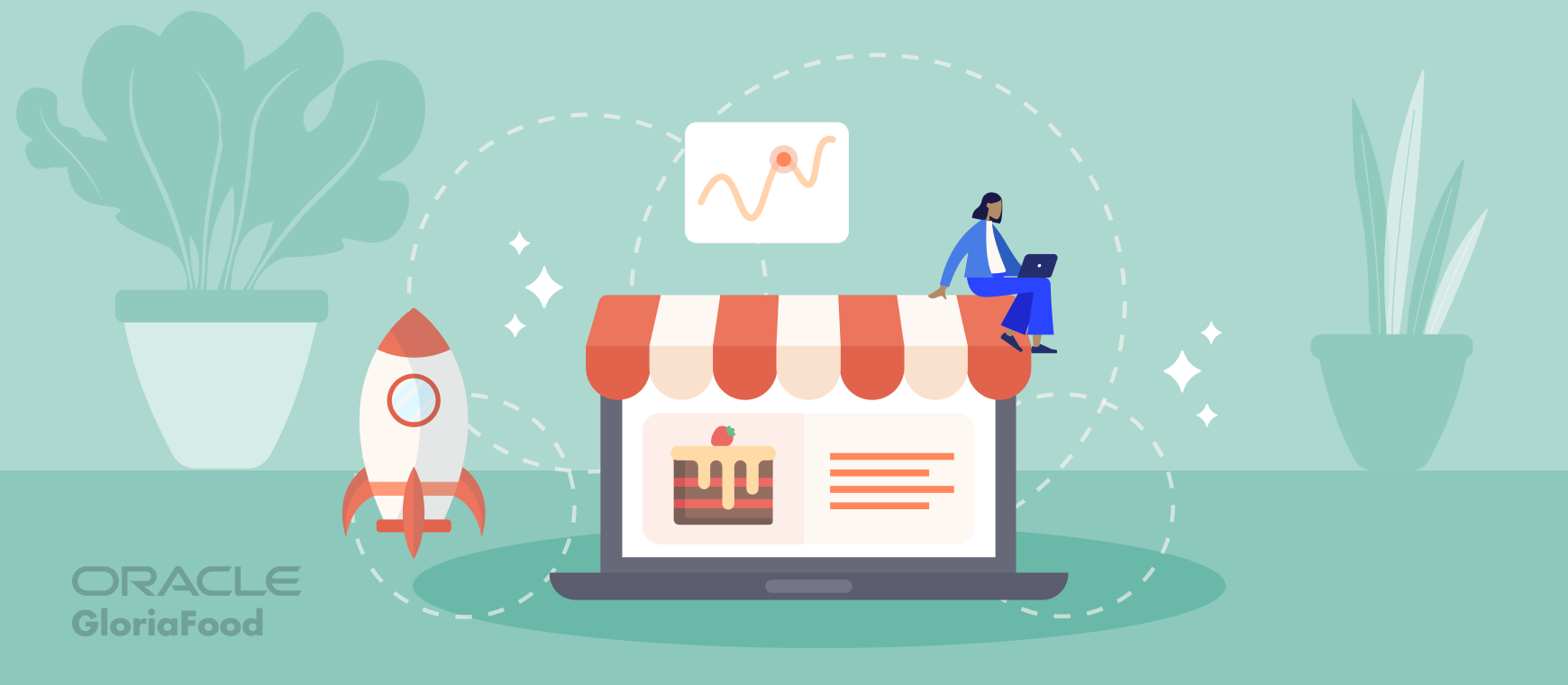- 1.What is digital marketing for restaurants?
- 2.Why is it important for restaurants to have a digital marketing strategy?
- 3.What are some of the key components of digital marketing for restaurants?
- Social media for restaurants
- Build a sales-optimized restaurant website
- Email and SMS Marketing
- Restaurant review sites
- Create a restaurant loyalty program
- 4.Conclusion
Marketing is described as the actions a business does to encourage the purchase or sale of a good or service. Advertising, selling, and delivering goods to customers or other businesses are all included in marketing.
Marketing is a fundamental part of running any business, more so for a business in the food industry. The restaurant industry holds one of the highest competition rates among all other industries. For this reason, it is crucial that restaurant owners and managers invest in a concrete digital marketing strategy to ensure that their establishment has a competitive advantage.
In this article, we will take a deep dive into the various components of digital marketing for restaurants, the various advantages, and disadvantages of each component, and how to successfully implement it.
What is digital marketing for restaurants?
Digital marketing for restaurants can be defined as the use of online channels to promote goods and services to food consumers. Websites, mobile devices, social media, search engines, and other channels with a similar function are used in this kind of marketing.
Restaurant managers have the possibility to broaden their brand’s audience and boost their visibility through digital marketing and paid advertising tools like Facebook Ads, Instagram Ads, and Google Ads. Restaurants can now use digital marketing channels to reach a broader audience thanks to the growth of social media platforms, search engines, and online directories.
Why is it important for restaurants to have a digital marketing strategy?
With the rise of online ordering and social media, having an online presence is no longer a nice to have. Restaurants must be visible online in order to attract new customers.
According to a recent study over 1 billion restaurant visits by consumers are swayed by digital marketing, and about 40% of foodies learn about restaurants through digital methods—apps, blogs, or websites. Here are the main benefits of why you should invest in digital marketing for restaurants.
More Customer Engagement
Restaurants can interact with clients online in order to develop relationships with them. Restaurants may demonstrate that they value their customers’ input and are devoted to offering a top-notch dining experience by responding to reviews, comments, and messages from patrons. Additionally, restaurants can employ digital marketing to notify patrons about their food, specials, events, and promotions to keep them interested in the establishment.
Precise Targeting and Customer Segmentation
You can target specific customers with digital marketing for restaurants based on their demographics, interests, and spending habits. You can choose to target consumers who have expressed interest in a cuisine or those who are seeking a restaurant close to where they are. You can improve the success of your marketing initiatives and reach consumers who are more likely to become regulars by focusing on specific demographics.
More Visibility and Reach
Digital marketing for restaurants provides you with an opportunity to ramp up your online presence and reach prospective customers. With the growth of social media platforms, online directories, and search engines, restaurants may now use online marketing channels to reach a wider audience. You can attract clients who might not have discovered your restaurant otherwise by having a great online presence.
Less expensive than traditional marketing
Digital marketing for restaurants can be done by using a combination of free resources that are readily available at your disposal. Traditional marketing such as print, and television ads tends to come at a hefty cost to restaurant owners.
Not only does digital marketing cost significantly less, but you can also track the success of your campaigns by using the analytics tools built into these low-cost online marketing tools.
What are some of the key Components of Digital Marketing for Restaurants?
Here are a few of the digital marketing tools you can leverage to gain a stronger online presence.
Social media for restaurants
With over 5.85 billion active users across various social media platforms, this has become the easiest and most powerful resource in a restaurant’s digital marketing strategy. Whether it be as simple as sharing a post of your daily special or creating a paid ad to promote your menu items, this tool is essential to the success of your marketing plan.
Here are a few more examples of how you can use social media to engage more clients.
• Post more high-quality food photos.
• Share recipes.
• Use more user-generated content.
• Run restaurant contests.
• Engage in employee spotlights. (Highlight the chefs, wait staff, and others).
• Communicate with customers.
Build a sales-optimized restaurant website
Your restaurant’s website is its digital storefront. Ensure that it is visually appealing, user-friendly, and mobile-responsive. Potential customers should easily find information about your menu, location, contact details, and opening hours.
When building a restaurant website, it is paramount that you focus on SEO. SEO (Search engine optimization) is a collection of practices geared at increasing a website’s exposure and attracting more organic traffic in search engines like Google.
All restaurant websites are not built equally, while some elements will be nice to have and will only add to the aesthetics of your website others are integral and increase your conversion rate.
SEO usually involves keyword research, content creation, and link building. It plays an essential role in improving your ranking positions. More traffic generates higher rankings. And more traffic translates into more new clients and brand recognition.
Here are some of the essentials for a great restaurant website.
• Responsive design
• Online ordering
• Reservations widget
• A detailed “About Us” section
• On-page restaurant SEO
• Links to your social media accounts
• Special offers and unique restaurant promotions
If you don’t already have a restaurant website, you can build one using our free restaurant website builder.
Email and SMS Marketing
Email marketing for restaurants is a direct marketing channel that allows food establishments to send information like menu updates, special offers, and other promotions to customers via email.
SMS marketing for restaurants allows you to send the same information to clients but by means of text messages.
To be able to send these forms of communication you are going to need the contact information of your clients.
A free restaurant management software can aid you in collecting food clients’ names, addresses, phone numbers, and email addresses.
GloriaFood also takes email marketing a step further with its Autopilot feature. This feature automates the communication process between restaurants and customers. Once enabled, the system sends messages to customers to:
• Complete their order if they have abandoned items in their checkout cart.
• Place a second order if they have only ordered from your restaurant once before.
• Order from your restaurant if they have not done so for a defined period of time.
Watch the below video to see the Autopilot feature in action:

Restaurant review sites
Restaurant review sites and websites or apps that allow food customers to review and rate restaurants that have visited. Getting listed on these review portals is fairly easy, all you need to do is enter a few details like your restaurant’s name and address.
Registering for an account on these portals will increase your online presence since 92% of customers said that they use them to research a restaurant before ordering.
Restaurant review portals can significantly impact your restaurant’s reputation so you should encourage satisfied customers to leave positive reviews.
You should learn how to respond to negative restaurant reviews in order to satisfy the customer and persuade them to change their review.
Some of the most popular restaurant review websites include:
• Google
• Yelp
• TripAdvisor
• Zomato
Create a restaurant loyalty program
A restaurant loyalty program is a marketing strategy in which restaurants reward loyal customers for their continued patronage. These rewards can come in the form of free gifts, discounted menu items, or other restaurant promotions. Rewards can be awarded based on the number of times a customer has ordered at an establishment or the cumulative order value that they have spent over a period.
Restaurant loyalty programs are a core part of your marketing strategy because they:
• Help retain restaurant customers.
• Help the restaurant stay in the minds of clients.
• Increase sales and revenue.
Conclusion
Digital marketing is no longer optional for restaurants; it’s a necessity for survival and growth. By investing in a strong digital marketing strategy, including website development, SEO, social media engagement, email marketing, and online review sites, restaurants can attract new customers, retain loyal patrons, and flourish in the digital age.
